|
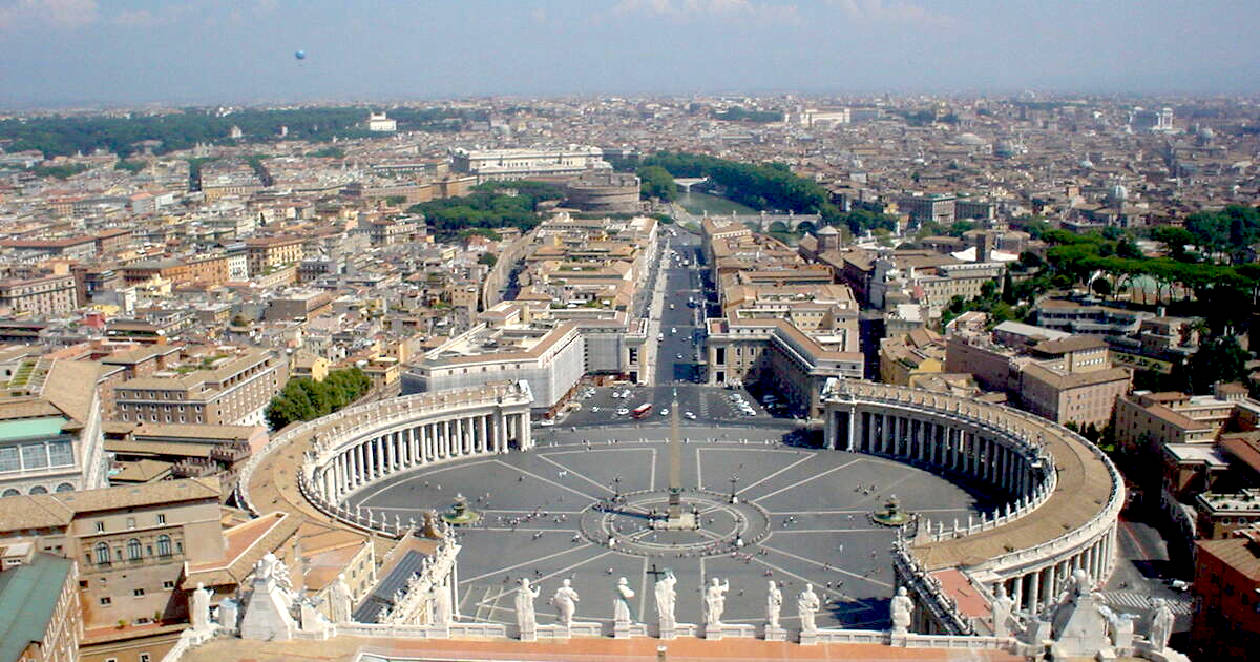
The Vatican palace is the residence of the pope within the city walls. The Holy See is the name given to the government of the Roman Catholic Church, which is led by the
Pope as the bishop of Rome. As such, the Holy See’s authority extends over Catholics throughout the world. Since 1929 it has resided in Vatican City, which was established as an independent state to enable the pope to exercise his universal authority.
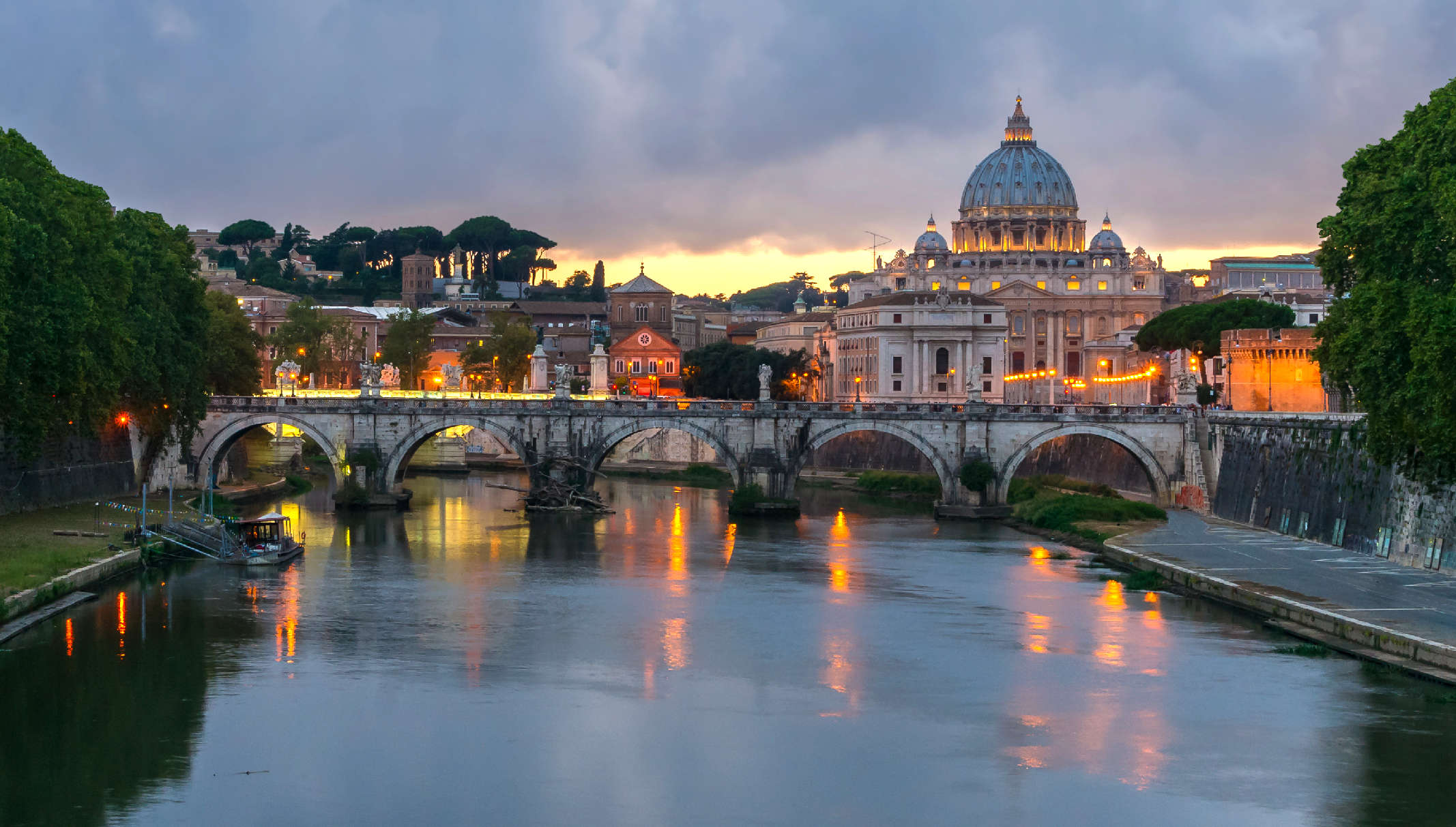
Vatican City, in full, State of the Vatican City, (Italian: Stato della Città del
Vaticano), is an ecclesiastical state, seat of the Roman Catholic Church, and an enclave in Rome, situated on the west bank of the
Tiber
River. Vatican City is the world’s smallest fully independent nation-state. Its medieval and Renaissance walls form its boundaries except on the southeast at St. Peter’s Square (Piazza San Pietro). Of the six entrances, only
three - the piazza, the Arco delle Campane (Arch of the Bells) in the facade of St. Peter’s Basilica, and the entrance to the Vatican Museums and Galleries in the north
wall - are open to the public. The most imposing building is St. Peter’s Basilica, built during the 4th century and rebuilt during the 16th century. Erected over the tomb of St. Peter the Apostle, it is the second largest religious building (after Yamoussoukro Basilica) in Christendom.
Vatican City has its own telephone system, post office, gardens, astronomical observatory, radio station, banking system, and pharmacy, as well as a contingent of Swiss Guards responsible for the personal safety of the pope since 1506. Almost all
supplies - including food, water,
electricity, and
gas - must be imported. There is no income tax and no restriction on the import or export of funds. As the Holy See, it derives its income from the voluntary contributions of more than one billion Roman Catholics worldwide, as well as interest on investments and the sale of stamps, coins, and publications. Banking operations and expenditures have been reported publicly since the early 1980s.
Vatican
city occupies 49 hectares (121 acres) and has a population of around 800-900 people.
Most workers in the Vatican are Italian and so Italian is the most widely-spoken language in Vatican City. But you will also be fine speaking English, as many staff speak at least a little English, enough to assist the millions of pilgrims and tourists that visit each year.
Until recently, popes have resided in the Apostolic Palace. Pope Francis said he thought this was more than he needed, so he resides instead in Casa Santa Marta, another building in Vatican City, just behind Saint Peter’s Basilica.
There is also the Papal summer residence at Castel Gandolfo, but Pope Francis has not used this so far.
The term “Holy See” comes from Latin “Sancta Sedes”, which means “Holy Chair.” The term was coined in the 1st century and refers to the enthronement ceremony of the pope.
This raised papal chair is also called a cathedra, and it’s meant to symbolize the power of the Church, not of the pope himself.
Until 1929, the Holy See had both spiritual and secular sovereignty.
When Italy became a unified country in 1846, the Papal States were dissolved. The Pope declared himself prisoner of the Vatican and did not leave the territory until Pope Pius IX signed the Lateran treaty with the Fascist regime in 1929. By doing so, the pope gave up all claims to temporal leadership but was given complete authority to oversee religious matters.
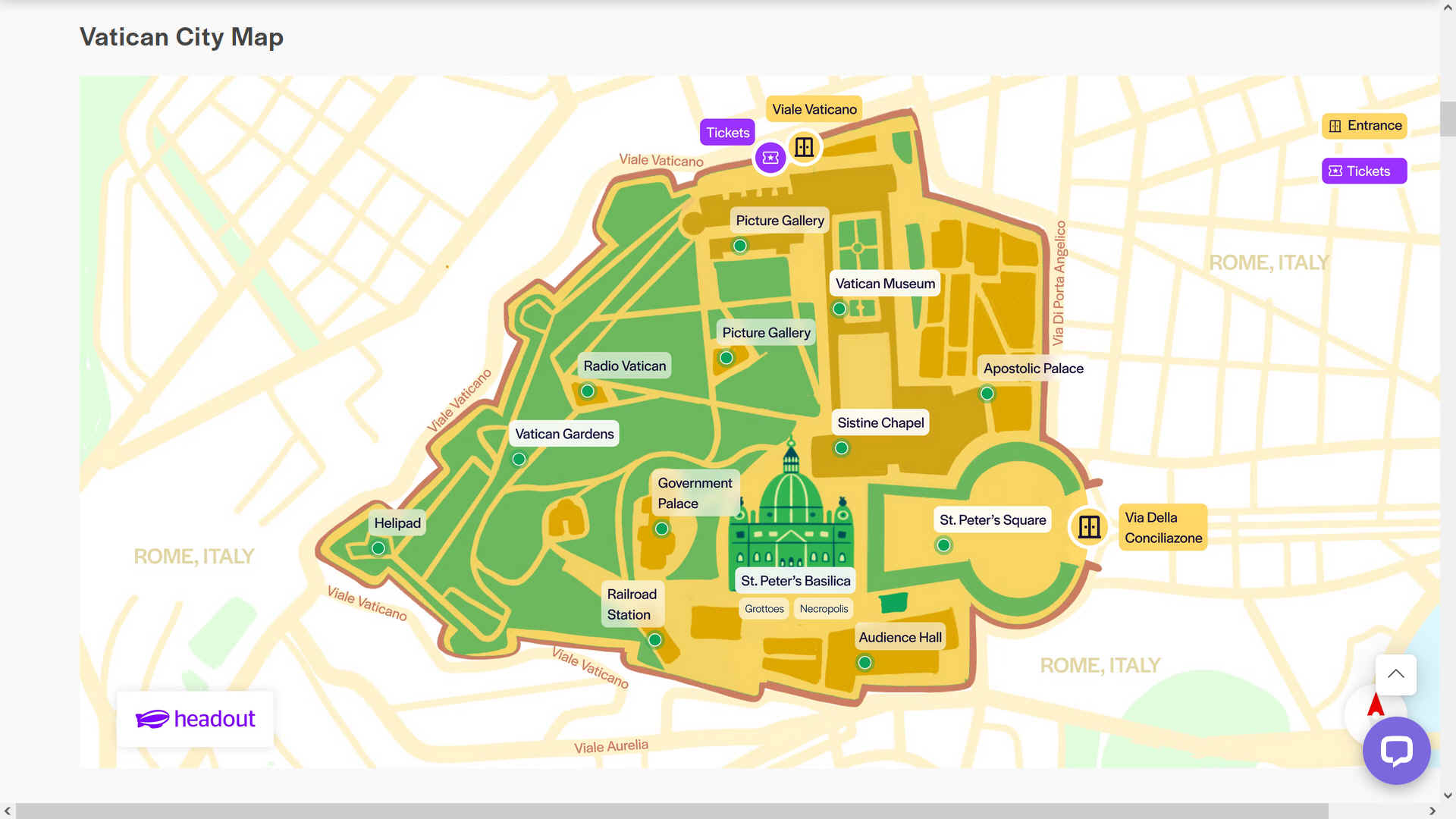
UNESCO
WORLD HERITAGE SITE
The Vatican City is a Unesco
world heritage site. It is one of the most sacred places in
Christendom,
attesting to a great history and a formidable spiritual venture. A unique collection of artistic and architectural masterpieces lie within the boundaries of this small state. At its centre is St Peter's Basilica, with its double colonnade and a circular piazza in front and bordered by palaces and gardens. The basilica, erected over the tomb of St Peter the Apostle, is the largest religious building in the world, the fruit of the combined genius of Bramante, Raphael, Michelangelo, Bernini and Maderno.
OUTSTANDING UNIVERSAL VALUE
One of the most sacred places in Christendom, Vatican City stands as a testimony to a history of about two millennia and to a formidable spiritual venture. Site of the tomb of the Apostle Saint Peter, first of the uninterrupted succession of Roman Pontiffs, and therefore a main pilgrimage centre, the Vatican is directly and tangibly linked with the history of Christianity. Furthermore, it is both an ideal and an exemplary creation of the Renaissance and of Baroque art. It exerted an enduring influence on the development of the arts from the 16th century.
The independent State, defined by the Lateran Treaty of 11 February 1929, extends its territorial sovereignty over an area of 44 ha in the centre of Rome: Vatican City enclosed by its walls and open toward the city through Bernini’s colonnade of Saint Peter’s. The boundaries of the city-state contain masterpieces and living institutions that are a witness to the unique continuity of the crucial role played by this place in the history of mankind. The Centre of Christianity since the foundation of Saint Peter’s Basilica by Constantine (4th century), and at a later stage the permanent seat of the Popes, the Vatican is at once the pre-eminently holy city for Catholics, an important archaeological site of the Roman world and one of the major cultural reference points of both Christians and non-Christians.
Its prestigious history explains the development of an architectural and artistic ensemble of exceptional value. Beneath the basilica of Saint Peter, reconstructed in the 16th century under the guidance of the most brilliant architects of the Renaissance, remains of the first basilica founded by Constantine still exist, as well as ruins of the circus of Caligula and Nero, and a Roman necropolis of the 1st century AD, where Saint Peter’s tomb is located. Under Julius II’s patronage in 1506, an extraordinary artistic era was inaugurated, leading to the decoration of Raphael’s Stanze and of the Sistine Chapel with frescoes by Michelangelo, along with the building of the new basilica, completed in 1626, fruit of the combined genius of Bramante, Raphael, Michelangelo, Bernini, Maderno and Della Porta.
The Vatican Palace is the result of a long series of additions and modifications by which, from the Middle Ages, the Popes rivalled each other in magnificence. The original building of Nicholas III (1277-1280) was enlarged in the 15th, 16th and 17th centuries: the history of the arts of the Renaissance and Baroque periods finds here iconic models.
In 1475, Sixtus IV founded the Vatican Library, which is the first open to the public in Europe; the collections of manuscripts and books, prints, drawings, coins and decorative arts, constantly increased through the centuries, making it an invaluable repository of human culture.
From the mid-18th century, the popes’ efforts were also directed towards expanding the private collections of antiquities dating back to the Renaissance: their transformation into public museums accessible to scholars and connoisseurs marks the origin of the Vatican Museums. New buildings were built specifically to house the classical sculptures, such as the Pio-Clementine Museum, which represents a milestone in the history of European culture. The 19th- and 20th-century additions of new and diverse collections and buildings accord with the tradition of papal patronage.
Criterion (i): The Vatican, a continuous artistic creation whose progress spreads over centuries, represents a unique masterpiece of the modelling of a space, integrating creations which are among the most renowned of mankind: not only the world famous icon of sacred architecture, the basilica of Saint Peter, but also the chapel of Nicholas V decorated by Fra Angelico, the Borgia apartment with frescoes by Pinturicchio, the Stanze of Raphael and his students, the Sistine Chapel, whose mural decoration, begun by Perugino, Botticelli and other painters, was completed in the 16th century with the frescoes of the ceiling and the monumental Last Judgement by Michelangelo, who left his last murals in the Pauline Chapel.
Criterion (ii): The Vatican exerted a deep influence on the development of art from the 16th century. Architects have visited it to study the constructions of Bramante (the Basilica of Saint Peter, the Belvedere Court), of Michelangelo (the cupola of Saint Peter), of Bernini (Saint Peter's colonnade, the Baldacchino of the Basilica). Both within and outside Europe, the Vatican buildings have been abundantly copied and imitated, the paintings (the frescoes of Raphael and Michelangelo) and the antiquities of the Museums no less so.
Criterion (iv): The Vatican is both an ideal and exemplary religious and palatial creation of the Renaissance and of Baroque art.
Criterion (vi): Site of the tomb of Saint Peter and pilgrimage centre, the Vatican is directly and materially linked with the history of Christianity. For more than a thousand years, mankind has accumulated, in this privileged site, the treasures of its collective memory (manuscripts and books of the Library) and of its universal genius.
INTEGRITY
The boundaries of the property, which coincide with the entire territory of the Vatican City State, have preserved their original integrity and characteristics. The exceptional urban, architectural and aesthetic values, even through successive additions and changes in form and design, invariably maintain the highest standards of artistic quality and workmanship, building an organic ensemble of unparalleled harmony. Civil and sacred buildings, which have been in use for centuries, maintain their religious, cultural, institutional and diplomatic functions unaltered.
AUTHENTICITY
The property meets the required conditions of authenticity, since most of its features are still preserved and maintained in their initial form, perform their primary functions and truthfully convey their original spiritual and cultural values. The extensive restoration campaigns conducted on some of the most significant monuments of the site since the date of the inscription ensure the material conservation of the heritage and strengthen its capacity for expressing its values.
PROTECTION AND MANAGEMENT REQUIREMENTS
The property is safeguarded by the law for the protection of the cultural heritage (no. 355, 25/07/2001) and by several rules of procedure issued by the various institutions of the Holy See in charge of heritage. For instance, the body responsible for the preservation and maintenance of Saint Peter’s Basilica, the Fabbrica di S.Pietro, was founded in 1506 and is still active. The legal protective mechanism and traditional management system are adequate and ensure the effective protection of the site. The state of conservation of the property is constantly and carefully monitored, with special attention paid to the impact of the huge number of pilgrims and visitors.
The archaeology is of particular interest to Blue
Shield.
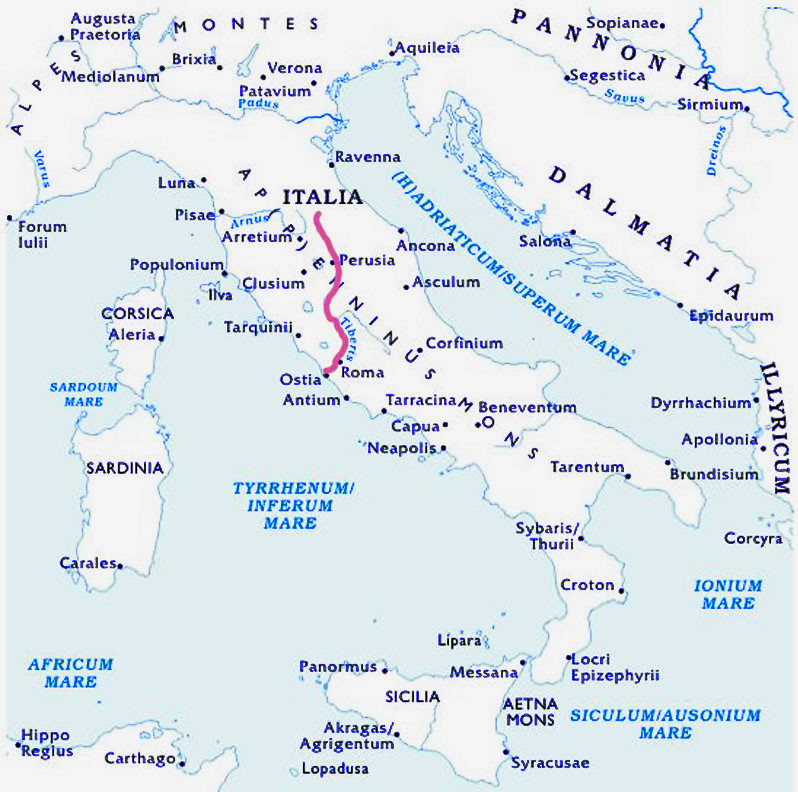
The
River Tiberis, Italy
HISTORY
OF ROME
According to legend, the city of Rome was founded in 753 BC on the banks of the Tiber about 25 km (16 mi) from the sea at Ostia. Tiber Island, in the center of the river between Trastevere and the ancient city center, was the site of an important ancient ford and was later bridged. Legend says Rome's founders, the twin brothers Romulus and Remus, were abandoned on its waters, where they were rescued by the she-wolf,
Lupa.
The
Christian faith did not exist at this time. Not until the
birth and death of Jesus
Christ.
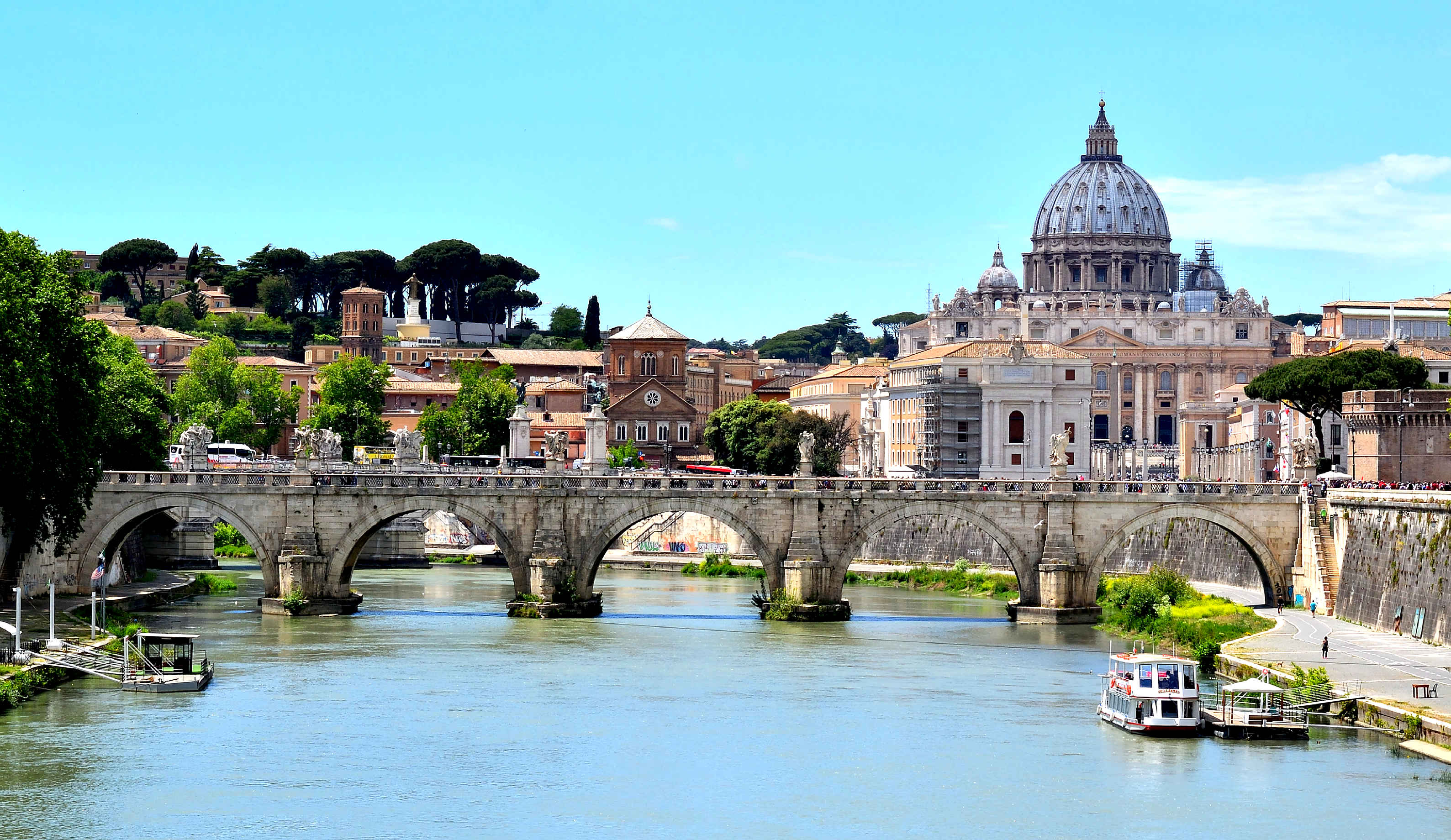
JOHN
STORM
In
this fictional series, our hero is strongly opposed to all
forms of pollution. Including social and political. He is a
conservationist first, and an activist second. Leading by
example. John
Storm captains a zero
emission solar
and hydrogen
powered ship called the Elizabeth
Swann.
He
eats a healthy diet, and prefers to drive electric
vehicles, whenever possible. He owns an electric
Jeep, that
he converted himself. Though, it can run on methanol,
using the original 4.0 liter petrol powered, internal
combustion engine.
Following
a request by (the fictional) Pope
Peter Benedict, for a consultation with John, he is
tasked with navigating the Tiber in the Elizabeth
Swann. Only to find that is not as easy as Google maps
make it appear, and that there is little information on the
subject. Mainly because of the narrowness of some of the
ancient Roman bridges, with stone arch spans, not conducive
to wide multi-hulled vessels. But then of course, how many
people would want to travel upriver in a large boat. It was
a rather unusual request, necessary only inasmuch as the
Swann is a mobile floating laboratory.
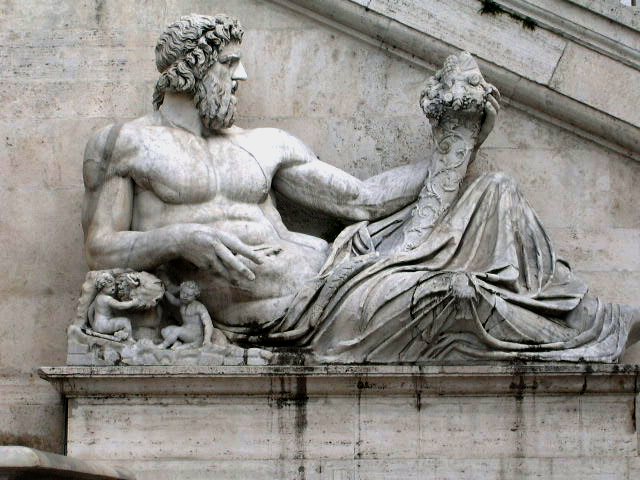
REFERENCE
https://whc.unesco.org/en/list/286/
|





